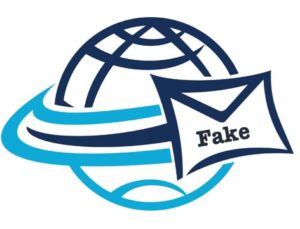By Dr. Ken Broda Bahm: 
There is an old saying attributed to Mark Twain, that “A lie can travel halfway around the world while the truth is still putting its shoes on.” Based on a recent large-scale MIT study, that turns out to be pretty accurate. The study, released this past week in the journal Science (Vosoughi, roy, & Aral, 2018), examined the spread of more than 126,000 true and false stories shared by more than three million people on Twitter, and assessed their truth based on respected fact-checking organizations. What they found was that false news has a big advantage over the truth: It reliably reaches more people, penetrates more deeply into social networks, and spreads faster. A fake story is more likely to go viral, being 70 percent more likely to be retweeted, and ultimately, a false story reaches 1,500 people an average of six times faster than a true story. And this advantage of the false over the true applies not just to politics, but to every subject they studied, including entertainment, business, science and technology, war and terrorism.
Based on a good discussion of the study in a recent article in The Atlantic, the reasons why false news has this advantage do not boil down to just a matter of technology. The researchers looked at the role of “bots,” or automated algorithms, and found that they tend to spread true information about as much as they spread false information. The answer is that it is the humans who are more likely to give the advantage to false information. According to the first author, Soroush Vosoughi, “that is not just because of bots. It might have something to do with human nature.” Specifically, two features tend to make the false more attractive and more sticky than the true: novelty and emotion. These are factors that any persuader can embed in their message, but they require more than a surface-level appreciation.
Novelty
The first trait that gives false information an advantage over true information, according to the researchers, is novelty. As The Atlantic article explains, the team found that “falsehoods are often notably different from all the tweets that have appeared in a user’s timeline 60 days prior to their retweeting them.” The paper went on to explain the communication advantages. “Novelty attracts human attention, contributes to productive decision-making, and encourages information sharing because novelty updates our understanding of the world. When information is novel, it is not only surprising, but also more valuable, both from an information theoretic perspective, in that it provides the greatest aid to decision-making, and from a social perspective, in that it conveys social status on one that is ‘in the know’ or has access to unique ‘inside’ information.”
The challenge for litigators in gaining a comparable advantage for the truth is to embrace novelty and move beyond the expected. Think of a short description of your case, and then make a bullet list of all the things your typical listener would expect you to say. For example, hearing that you’re bringing a case on behalf of an injured child, they’d expect you to talk about the child’s innocence, sympathetic situation, and lost potential. In that setting, the opposite message that the child is savvy, capable, and doesn’t even consider herself disadvantaged might be the more novel and helpful message.
Emotion
The second human factor that tends to provide wings to false information is emotion. “Fake news evokes much more emotion than the average tweet,” The Atlantic explains. Political scientist Rebekah Tromble adds, “The key takeaway is really that content that arouses strong emotions spreads further, faster, more deeply, and more broadly on Twitter.”
Persuaders, of course, know that emotion is important. But in a trial context, I believe that litigators often have an artificially narrow view of emotion. To many, emotion means sympathy, sympathy is for plaintiffs, and with increasingly jaded juries, sympathy doesn’t even work all that well for them. However, the reality is that sympathy is just one emotion in a broad array of emotions. The emotional component is anything that adds feeling to the logical appeals you are making: the surprise that is attached to the novel claim above, for example, or the emotional satisfaction that we attach to fairness, equity, or even ‘just deserts.’ Ultimately, anything that evokes and channels a jurors’ motivation is going to have that emotional component, so it helps to ask not just, “What do they understand” and “What will they agree with,” but also, “What do they want to find?”
Other Posts on Fake News:
- Prepare for your Post-Fact Jury: Top Posts
- Ask Your Potential Juror: Having an Epistemological Crisis?
- Link the New to the Known
______
Vosoughi, S., Roy, D., & Aral, S. (2018). The Spread of True and False News Online. Science 359:6380 (March). URL: http://science.sciencemag.org/content/359/6380/1146.full